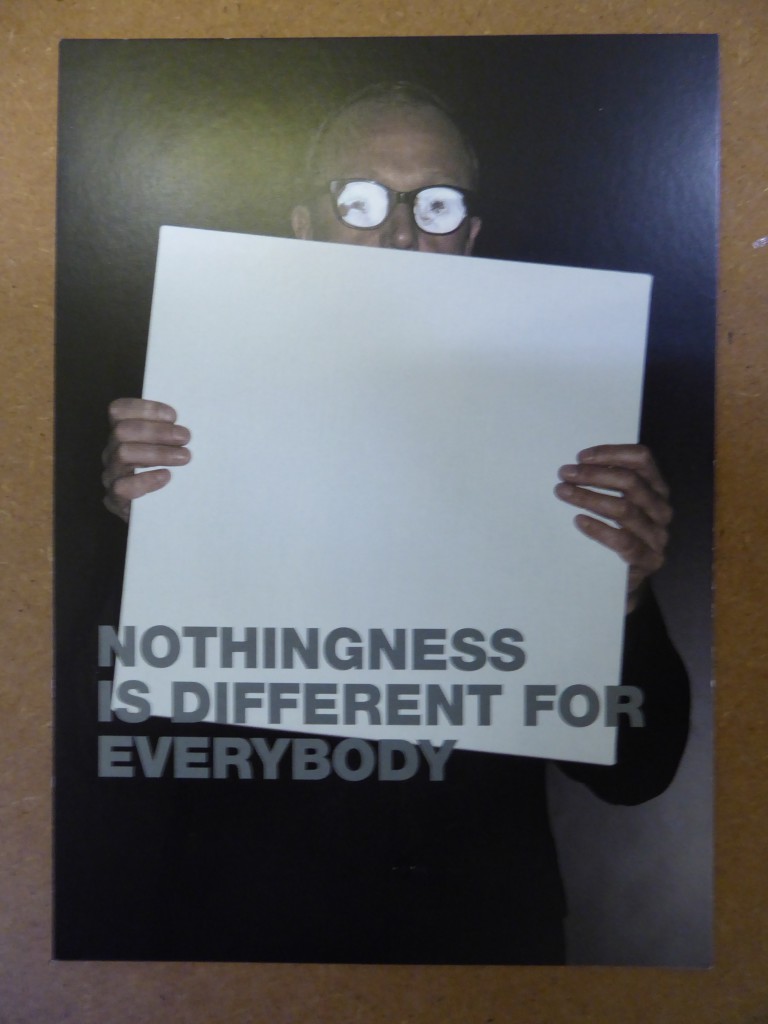

The picture shows the Austrian artist Heimo Zobernig holding a whithe canvas.
“‘Nothingness is different for Everybody’ – This is a very true statement (words to live by)” Thato Mogotsi
Swiss Institute New York invitations










A series of surprising and ambitious invitation cards by the Swiss Institute in New York designed by Patrick Li (Li Inc., est. 2000). Gianni Jetzer, SI’s its curator from 2006 to 2013, first worked with FLAG (est. 2002) by Swiss designers Aubry Broquard who, in 2008, became artists.
Roma Roma Roma invitation posters

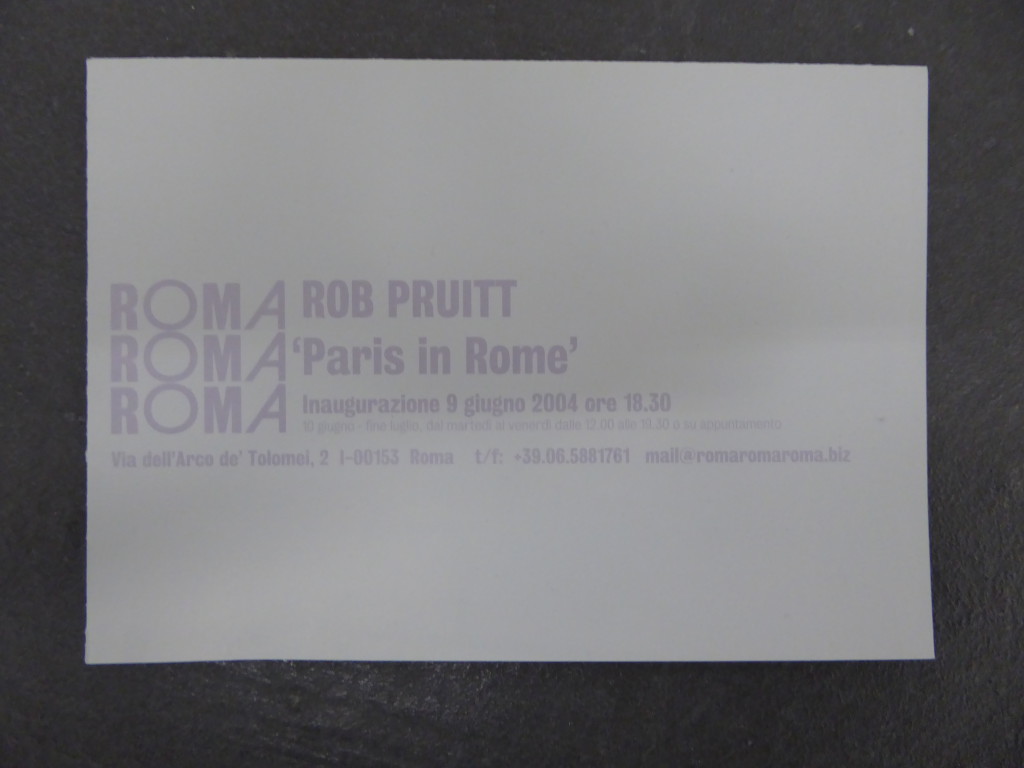

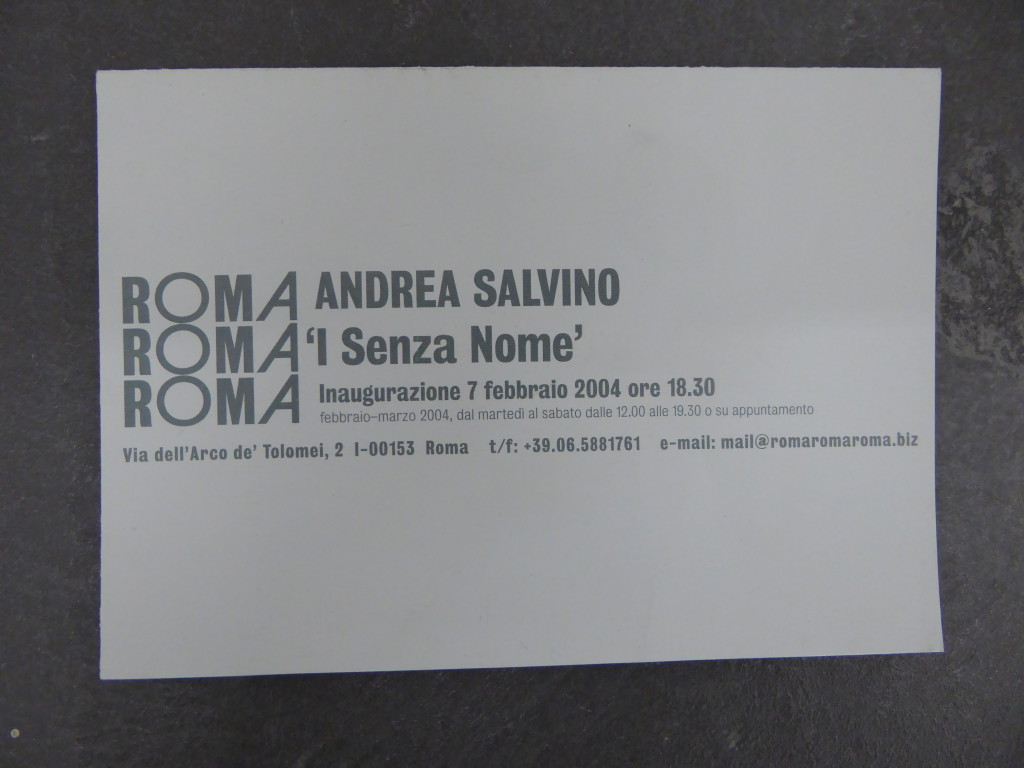






In 2002 the three gallerists Gavin Brown (New York), Franco Noero (Turin) and Toby Webster (The Modern Institute, Glasgow) opened a gallery in Rome. It was a common dream, which lasted for a few years. In 2015, Brown went back to Rome and opened a second gallery at Sant’Andrea de Scaphis, a deconsecrated eighth-century church at Via dei Vascellari 69 in the Trastevere neighborhood.
Sprüth Magers poster invitations



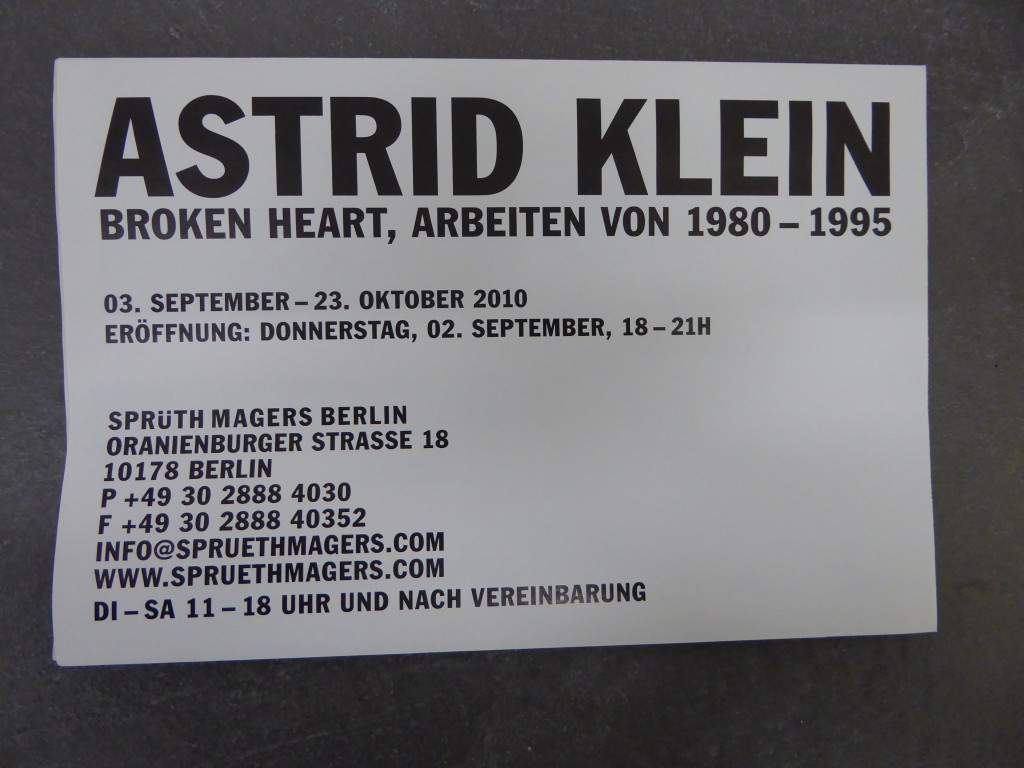












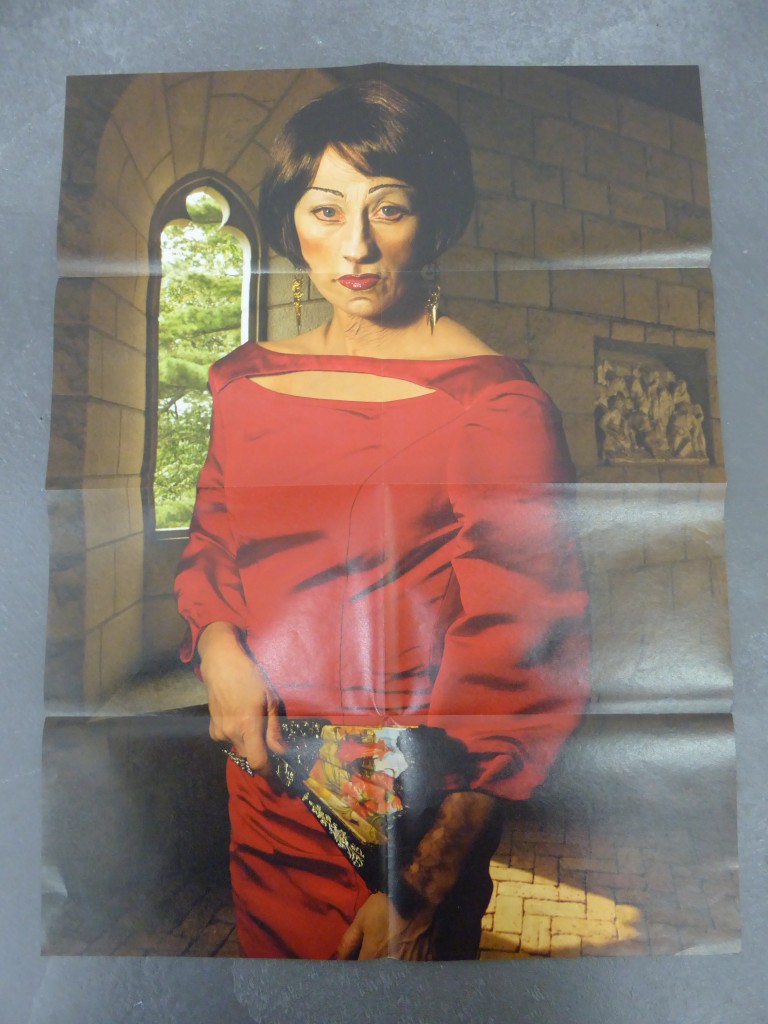






Invitation cards/posters by Sprüth Magers.
The gallery emerged amid an extraordinary outburst in contemporary art that took place in Cologne in the early 1980s. Its first iteration as Monika Sprüth Gallery opened in 1983 with an exhibition of paintings by Andreas Schulze and was soon followed by exhibitions of Rosemarie Trockel and Peter Fischli David Weiss. Over the next few years, George Condo, Jenny Holzer, Barbara Kruger, Louise Lawler and Cindy Sherman all showed at the gallery and have continued to do so for the last thirty years. In 1991, a second gallery opened in Cologne under the name of Philomene Magers. Early exhibitions included Ad Reinhardt’s Black Paintings, Robert Morris’s felt pieces and John Baldessari’s photographs and text paintings from the 1960s. The two galleries merged into a single entity in 1998, and in 2000, a Munich space opened with Ed Ruscha’s exhibition Gunpowder and Stains.
In 2003, Sprüth Magers Lee opened in London with an exhibition of works by Donald Judd. In 2007, Sprüth Magers relocated to Grafton Street, Mayfair, inaugurating the space with a show of new photographs by Andreas Gursky. In 2008, the gallery established its flagship space in a former dancehall in Berlin Mitte, not far from the city’s Museum Island, debuting with Thomas Scheibitz and George Condo. The latest chapter in the gallery’s history was the launch of the Los Angeles space in 2016, presenting new works by John Baldessari. Located on Wilshire Boulevard, just across the road from the Los Angeles County Museum of Art, it is housed in a two-story building designed in the late 1960s by renowned West Coast architects William L. Pereira & Associates.” Source
Specific Object Invitation cards
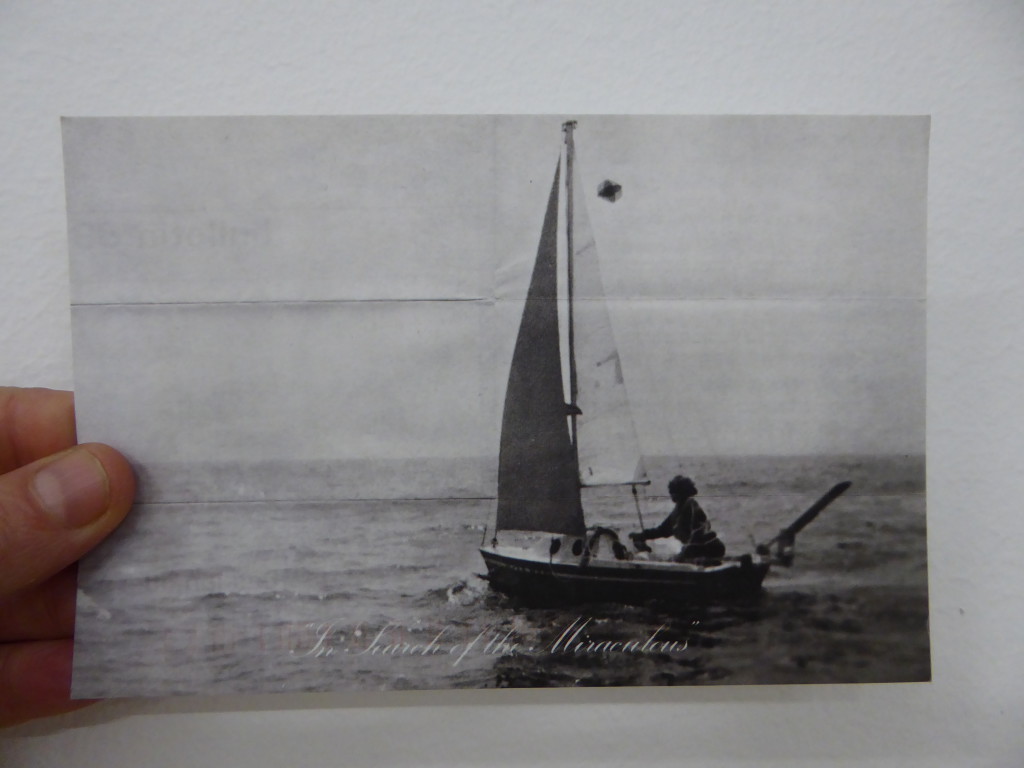









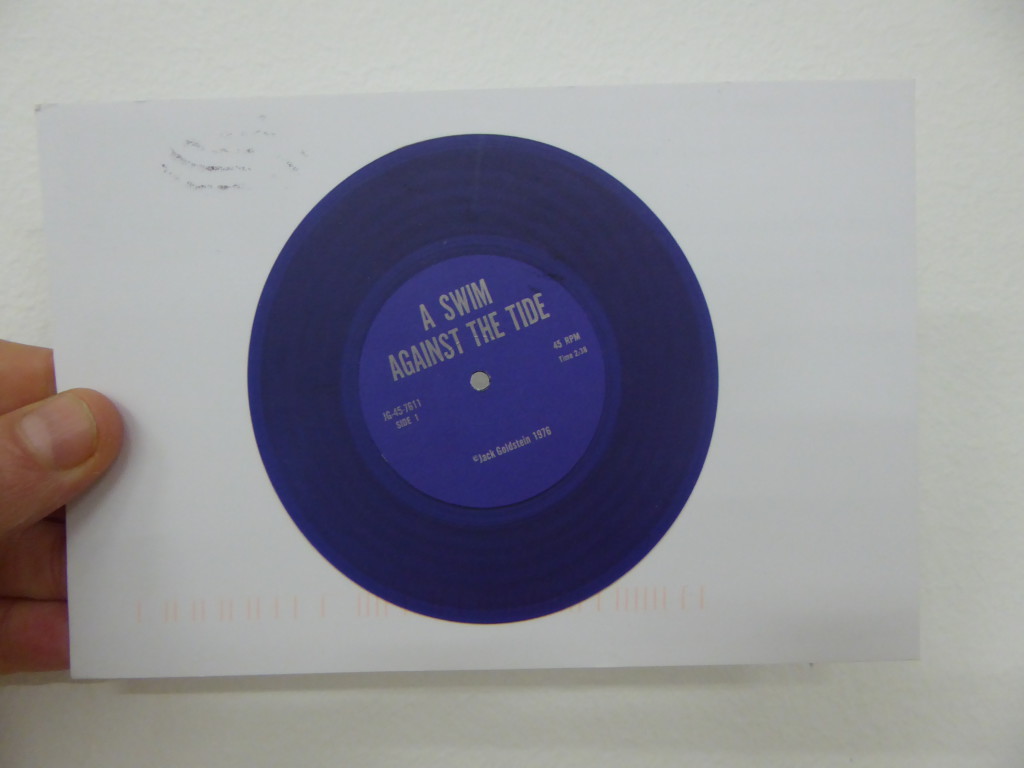













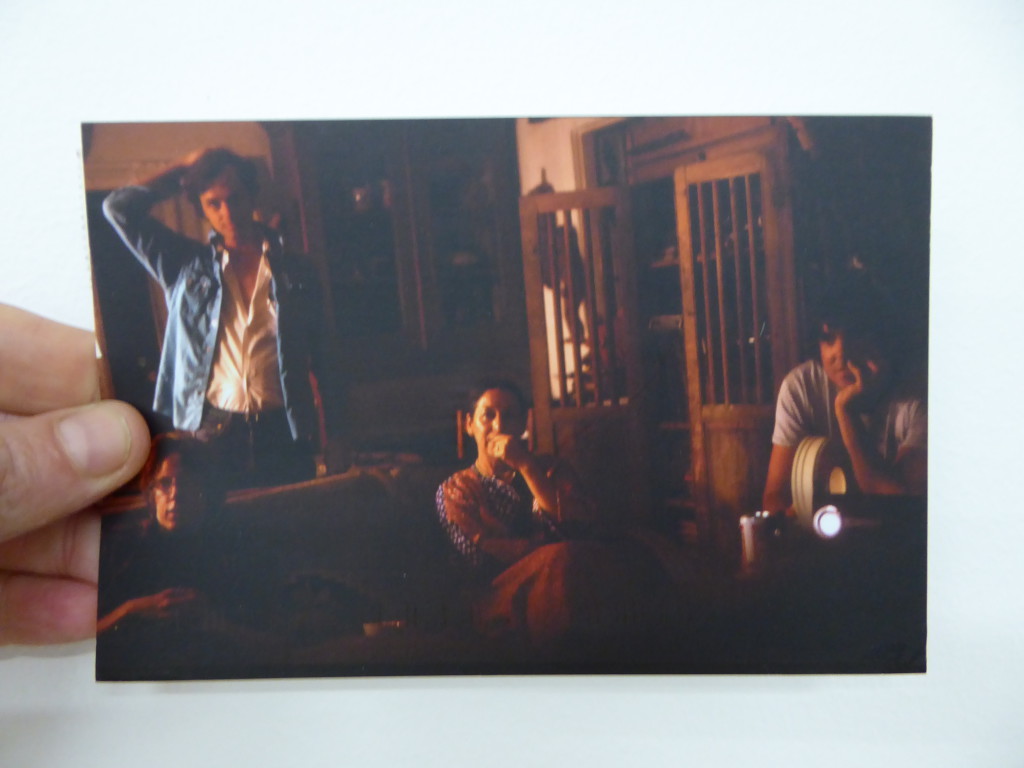



Specific Object (2004 – 20013) was a gallery, bookstore and think-tank dedicated to art post 1960s – specifically pop, Fluxus, minimal and conceptual – with an interest in the art that informed the 1960s and 1970s, as well artists whose works organically followed from the era.
Specific Object worked to isolate distinct works of value – historically, monetarily and / or intellectually valuable – and show them in an isolated context allowing these works, or objects, their own place, space and time. The material Specific Object presented ranged from artists’ publications, ephemera, prints, multiples and other editions to literature, music / audio works and unique artworks of the contemporary world.
In November 2004 Specific Object acquired the inventory of Barbara Moore’s bookstore Bound & Unbound. Through her bookshops Bound & Unbound and its predecessor Backworks, founded in 1976, Moore has been a seminal and innovative champion of artists working in alternative mediums.
From 1998 through 2004 David Platzker was the Executive Director of the non-profit institution Printed Matter, Inc. He is also the co-author, and co-curator – with Elizabeth Wyckoff – of Hard Pressed: 600 Years of Prints and Process (International Print Center New York & Hudson Hills Press, 2000); and – with Richard H. Axsom – the book and exhibition entitled Printed Stuff: Prints, Posters, and Ephemera by Claes Oldenburg : A Catalogue Raisonne 1958-1996 (Madison Art Center & Hudson Hills Press, 1997), which was awarded the George Wittenborn Award for Best Art Publication of 1997 by the Art Libraries Society of North America.
He has curated exhibitions of the works of Art & Project, John Baldessari, Marcel Broodthaers, Documenta 5, Conceptual Art, Marcel Duchamp, Donald Judd, Bruce Nauman, Oldenburg, Raymond Pettibon, Dieter Roth, and Edward Ruscha in addition to commissioning or curating exhibitions at Printed Matter of Angelblood, Larry Clark, Erin Cosgrove, Meg Cranston, General Idea, Jenny Holzer, Reverend Jen, Allan Kaprow, Yoko Ono, Ryan McGinness, Sonic Youth, Tom Sachs, David Tremlett, Richard Tuttle and the Guerrilla Girls.
Platzker was also the host of WPS1.org’s Recorded Matter on-line radio program. Archived programs can be found at www.artonair.org.
On May 15, 2013 David Platzker became Curator in the Department of Prints and Illustrated Books at The Museum of Modern Art, New York (until 2018).
Ida Ekblad/Tobias Madison
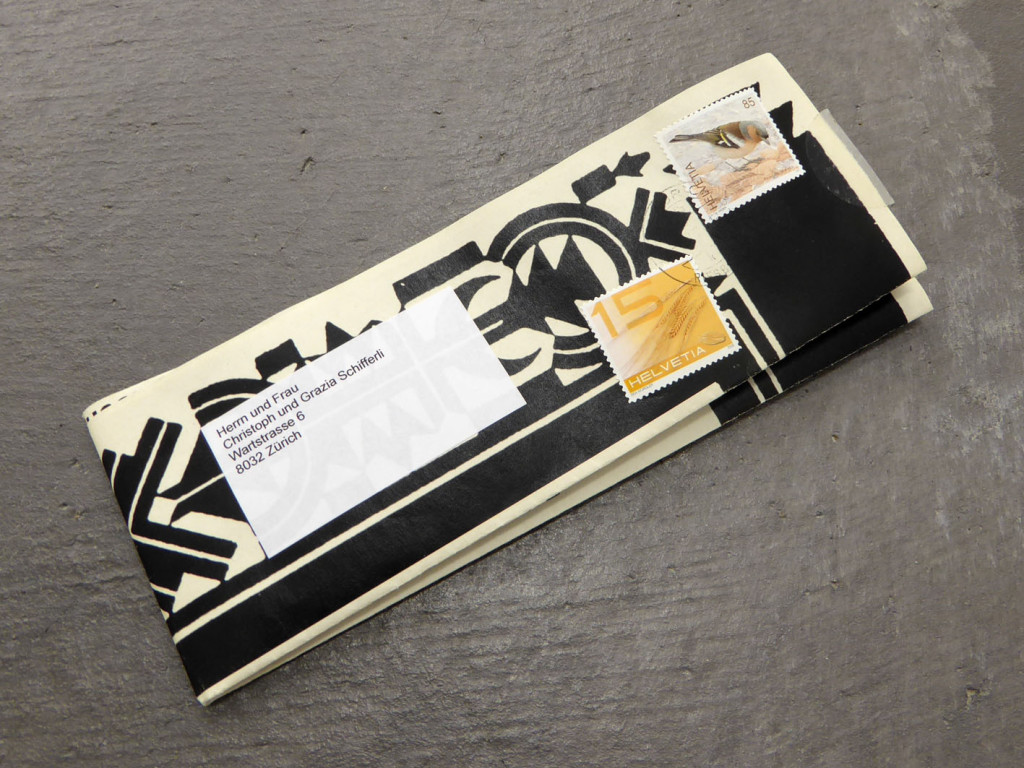



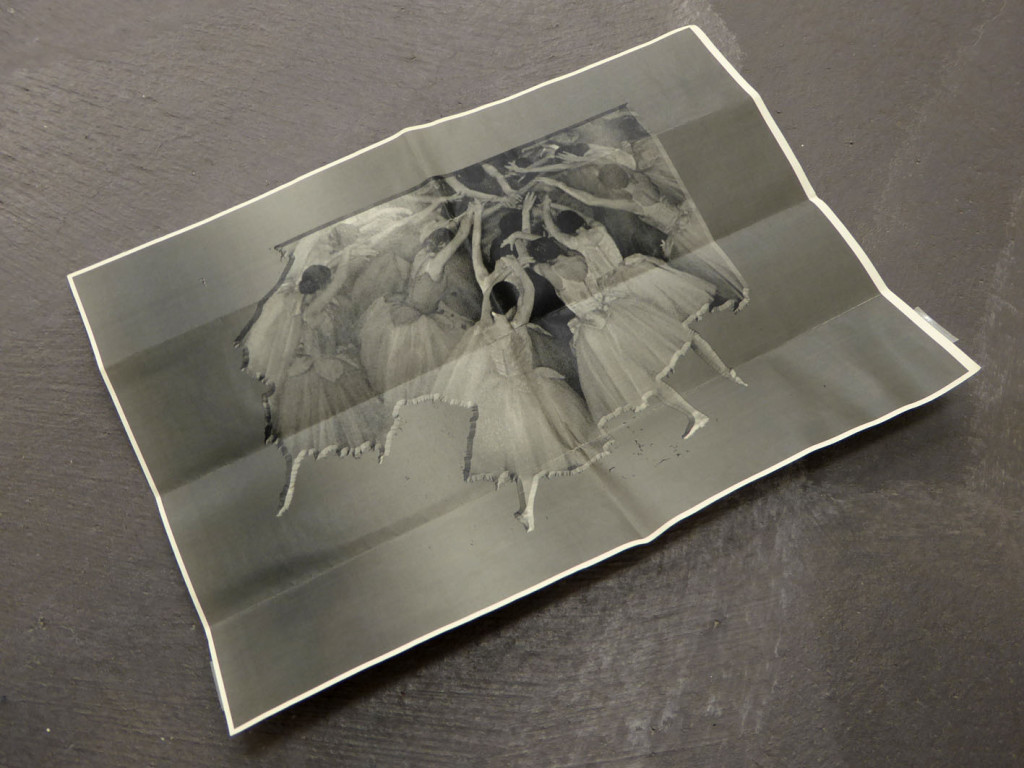
Invitation card by Zurich gallery Karma International for the show by Ida Ekblad and Tobias Madison in 2009.
Anonymous user comment: “The ‘non-book’ shape of the fold is intriguing and the graphic layout causes it to open in a dramatic way: first displaying a bold pattern, then revealing a name, finally opening up to a wholly unexpected image – in this case a geographic-dancegraphic hybrid.”
Oliver Ross und Kerim Seiler stellen aus
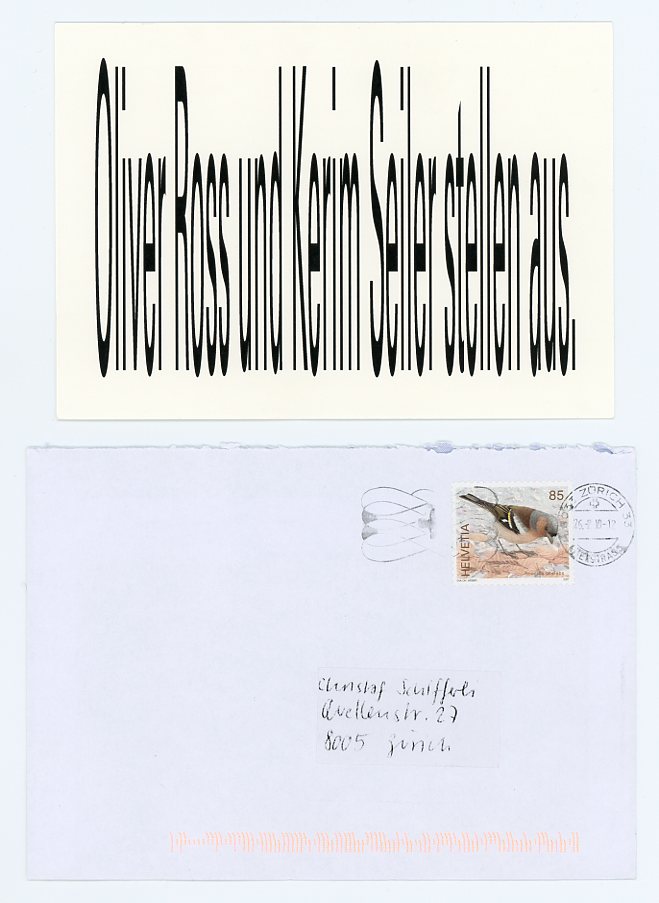

Weil Oliver es gefunden hat und weil es die Karte noch gibt. Es war sicher eine schöne Ausstellung, ich habe sie nicht gesehen. Den Ausstellungsraum gibt es wohl nicht mehr. Wenn man die Karte dreht, im Kreis immerzu, wird sie meditativ. Auf dem Umschlag ist eine Briefmarke mit einem süssen, nach vorn gebeugten Vögelchen. Ausserdem ist das Adressetikett, mit der Hand geschrieben, das macht Sinn. Jutta Pillen-Kontetzka
Michael Riedel

A poster by German artist Michael Riedel. As Martin Kippenberger or Lawrence Weiner, Riedel’s announcements, invitation cards, and flyers are an important element of his art practice. They communicate communication, they brand branding, the archive archiving and they record recording. If you have them all, you may have everything and nothing.
User comment: “It has to have 3 ingredients: 1. image; 2. text; 3. a form (more than a sheet of paper)
It has to do something – turn, fold, flip. A key aspect is text of ranging sizes + fonts, especially the text which runs off the page, forcing you to follow it, open the poster, rotate it to see more. I want to touch it, to zoom in and out – that is, to conclude a thought and have my attention renewed by an adjacent image.” Lara Mehling
Hans-Peter Feldmann

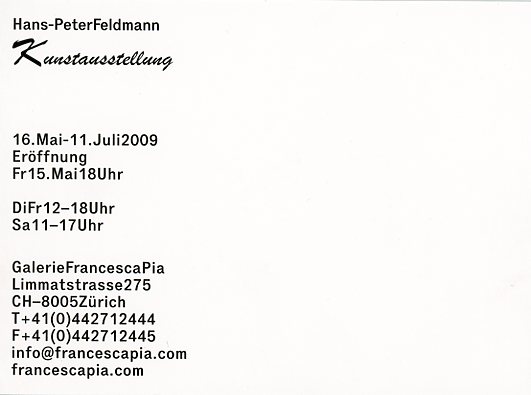
The invitation card for Hans-Peter Feldmann’s show at Galerie Francesca Pia. Here what wikipedia writes: “Hans-Peter Feldmann (born 1941 in Düsseldorf, Germany) is a German visual artist. Feldmann’s approach to art-making is one of collecting, ordering and re-presenting.”
User comment: “Ich mag das Foto weil alles auf einmal passiert: vorwärts, rückwärts, hinsitzen, aufstehen, Höflichkeit, Hinterhalt. Den Künstler kenne ich nicht.” Ludwig Berger
Ein Schuss Jimi Hendrix


User comment: “Die Postkarte hat mich auf den ersten Blick wegen der Grafik angesprochen.
“Black & grey in blau mit einem Schuss Jimi Hendrix.” Manuel
 follow
follow